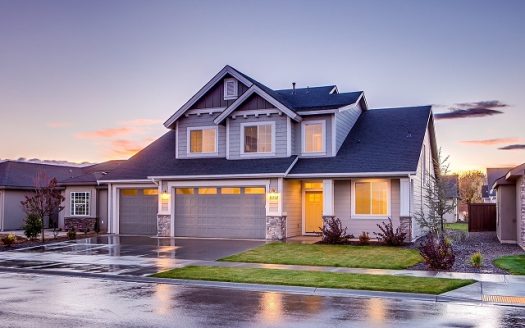COMMERCIAL REAL ESTATE
Understanding Commercial Real Estate and Its Various Types
Commercial real estate (CRE) represents a significant sector within the property market, encompassing a wide array of property types and investment opportunities. Whether you’re an investor, business owner, or simply interested in the field, understanding the different types of commercial real estatehttp://propertymadam.com can provide valuable insights into how these properties function and their potential benefits. This comprehensive guide delves into the various types of commercial real estate, their characteristics, and the factors that influence their value.
1. What is Commercial Real Estate?
Commercial real estate refers to properties used exclusively for business or income-generating purposes. Unlike residential real estate, which is primarily used for living accommodations, commercial real estate is intended for operations that generate revenue. This sector includes office buildings, retail spaces, industrial facilities, and other properties used for business activities.
Key Features of Commercial Real Estate:
Revenue Generation: CRE properties are primarily purchased or leased for their income potential.
Lease Terms:Commercial leases are typically longer than residential leases, often spanning multiple years.
Investment Potential: CRE offers opportunities for both capital appreciation and rental income, making it an attractive option for investors.
2. Types of Commercial Real Estate
Commercial real estate can be categorized into several main types, each serving different purposes and market needs. Here’s an in-depth look at each type:
a. Office Buildings
Description:
Office buildings are structures designed to accommodate businesses and their operations. They range from small, single-tenant offices to large, multi-tenant skyscrapers in major cities.
Key Considerations:
Location: Proximity to transportation, business hubs, and amenities can affect demand.
Amenities: Features like parking, security, and conference rooms can enhance appeal.
b. Retail Properties
Description:
Retail properties are designed for businesses that sell goods or services directly to consumers. They include shopping centers, malls, standalone stores, and more.
Key Considerations:
Location: High foot traffic and visibility are crucial for retail success.
Consumer Trends: Understanding changing consumer preferences can help in selecting the right tenants.
c. Industrial Properties
Description:
Industrial properties are used for manufacturing, warehousing, distribution, and logistics. These spaces are designed to facilitate the production and movement of goods.
Key Considerations:
Location:Proximity to transportation networks, such as highways, ports, and railways, is vital for efficient logistics.
Infrastructure: Facilities should be equipped with adequate loading docks, storage space, and utility connections.
d. Multifamily Properties
Description:
Multifamily properties are residential buildings with multiple units, intended for rental income. They offer an opportunity for investors to earn revenue through rent.
Key Considerations:
Occupancy Rates: High occupancy rates indicate strong demand and stable rental income.
Management: Effective property management is crucial for maintaining tenant satisfaction and property condition.
e. Hospitality Properties
Description:
Hospitality properties cater to travelers and tourists, providing accommodations and related services. This category includes hotels, motels, and resorts.
Key Considerations:
Location: Proximity to tourist attractions, business centers, and transportation hubs affects occupancy rates.
Seasonality: Understanding peak travel seasons and adjusting operations accordingly can optimize revenue
f. Mixed-Use Properties
Description:
Mixed-use properties combine multiple types of uses within a single development. They integrate residential, commercial, and sometimes industrial spaces to create vibrant, multifunctional environments.
Key Considerations:
Design and Planning: Successful mixed-use developments require careful planning to ensure harmonious integration of different uses.
Community Impact: These properties can enhance local neighborhoods by providing diverse amenities and services.
3. Factors Affecting Commercial Real Estate Value
Understanding what drives the value of commercial real estate is crucial for both investors and businesses. Here are some key factors:
a. Location
Economic Indicators: Areas with strong economic growth, low unemployment, and a robust business environment tend to have higher real estate values.
Accessibility: Proximity to major transportation routes, business centers, and amenities can significantly impact property value.
b. Market Conditions
Demand and Supply: The balance between demand and supply affects rental rates and property values. High demand with limited supply usually drives up prices.
Interest Rates: Changes in interest rates can influence investment decisions and property values. Lower rates often lead to higher property values due to increased borrowing capacity.
c. Property Condition
Maintenance and Upgrades: Well-maintained and updated properties typically command higher rents and prices. Regular renovations and upkeep are essential.
Compliance: Ensuring that properties meet building codes and regulations is crucial for maintaining value and attracting tenants.
d. Economic and Demographic Trends
Population Growth: Areas with growing populations often experience increased demand for commercial properties.
Industry Trends: Shifts in industry trends, such as the rise of e-commerce, can impact the demand for certain types of commercial real estate.
4. Investing in Commercial Real Estate
Investing in commercial real estate can be highly profitable but requires careful consideration and planning. Here are some tips for successful investment:
a. Research and Analysis
Market Research: Conduct thorough research on market trends, property values, and economic indicators in the target area.
Financial Analysis: Evaluate the potential return on investment (ROI) by analyzing rental income, operating expenses, and property appreciation.
b. Professional Guidance
Real Estate Agents: Work with experienced commercial real estate agents who have expertise in the specific property type and market.
Legal and Financial Advisors: Consult with legal and financial professionals to navigate contracts, financing options, and investment strategies.
c. Risk Management
Diversification: Consider diversifying your real estate portfolio to spread risk across different property types and locations
Due Diligence: Perform thorough due diligence before making any investment decisions, including property inspections and financial audits.
Commercial real estate offers
Commercial real estate offers a diverse range of property types, each with unique characteristics and investment potential. From office buildings and retail spaces to industrial facilities and mixed-use developments, understanding the various types of commercial real estate can help you make informed decisions and maximize your investment returns. Whether you’re looking to invest, lease, or purchase commercial property, a comprehensive understanding of these types and the factors influencing their value will guide you towards successful outcomes in the dynamic world of commercial real estate.






